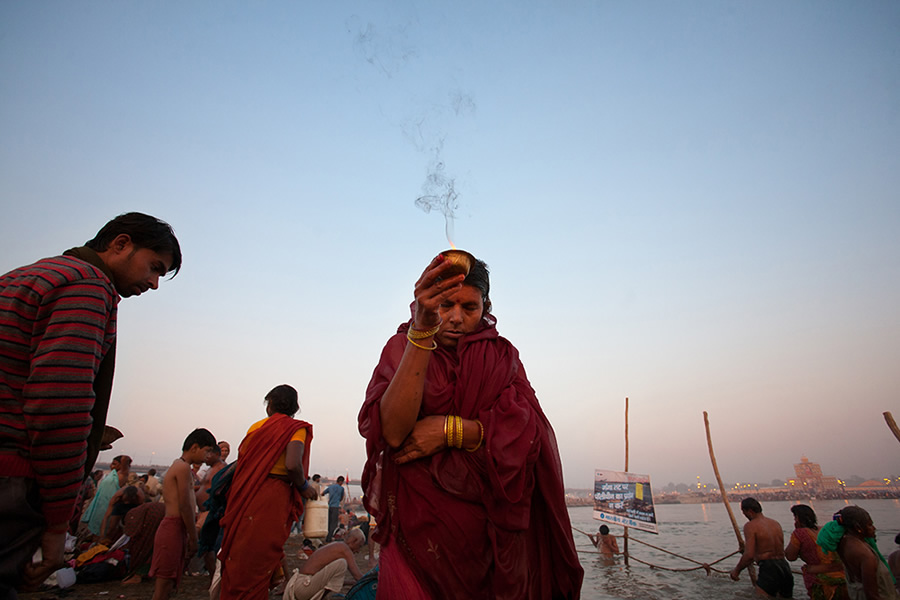

“Improper management of Municipal Solid Waste (MSW) causes environmental pollution and is a source of infection and therefore, management of solid waste generated during Kumbh Mela was of utmost importance,” the CAG report said.

I want to be a perfect human being.It said that even before the Kumbh began a massive scrapheap of MSW weighing 3,61,136 metric tonnes (MT) was accumulated at Banswar solid waste processing plant site and it further piled up during January 2019 to March 2019 period by an additional collection of 52,727 MT of MSW. Krishnanand puts it best when he concludes, "I no longer want to be a Hindu, Muslim, Buddhist. None of them walks away with the same understanding of what the Kumbh Mela meant, proving that a spiritual festival doesn't have to be limited to its particular faith. And though a proper investigation of the festival would be incomplete without the more extreme elements, lingering on a man who ties his penis around a stick which he then holds behind his back and invites onlookers to stand on seems like a shortcut to entertainment, not enlightenment.īenazzo and Day save the most compelling aspect of the documentary for the end, when Dyan, Justin, and Swami Krishnanand compare their conclusions. One of the gurus interviewed by Swami Krishnanand warns that the stunts and tricks of other spiritual leaders are like a peep show for outsiders. Unfortunately, that same enthusiasm threatens to turn the film into a festival sideshow. A visit from the Dalai Lama with other Hindu and Buddhist leaders brings the festival to a climax before the day when pilgrims gather together at the river's edge for a sacred cleansing.īenazzo and Day are clearly enamored with the festival, and their enthusiasm comes through in the compelling responses they garner from Kumbh Mela celebrants. A Japanese woman is buried in a pit for three days in order to meditate more powerfully, while another guru climbs into a throne of nails hanging precariously over a bed of fire. While some of the gurus offer wisdom in conversation and song, others take a more dramatic approach to spirituality. Camps are erected around various gurus, each with their own interpretation of meditation and spiritual awareness, but all emphasizing the same messages: There must be peace, there must be love. From here the film loosely follows the journey of Swami Krishnanand, a Hindu monk, and his two American companions, Dyan Summers and Justin Davis, through the tent-villages at Allahabad, the holiest of the four locations. Shortcut To Nirvana opens with a satellite photograph of the convergence of the two rivers during Kumbh Mela, revealing a dark amassing of camps on the bank of the Ganges. Every 12 years (one god day = 1 human year) pilgrims gather at the four holy sites to celebrate life, and faith, and take a spiritual cleansing bath in the Ganges River.

During the struggle, drops fell from the pot onto four locations in India: Allahabad, Haridwar, Ujjain, and Nashik. Kumbh Mela celebrates a Hindu legend in which gods and demons fought over a pot of amrita, the nectar of immortality, for 12 days. Shortcut To Nirvana: A Pilgrimage to the Kumbh Mela, from directors Maurizio Benazzo and Nick Day, attempts to take the viewer inside a festival that brings a little more than 1 percent of the world's population onto a single riverbank. India's Kumbh Mela festival, held near the town of Allahabad, is the largest single gathering of people in history according to the Guiness Book of World Records, attracting up to 70 million people to the sangam, the convergence of the Ganges, Yamuna, and spiritual Saraswati rivers. If you thought Woodstock was the greatest coming together of humanity for peace, love, and music, you should cast your eyes to the East. Transcendence at the tip of a spear: The many gurus who hold forth at Kumbh Mela promote a multitude of paths to enlightenment, some more visually impressive than others, such as this spiritual leader perched on a bed of spear tips over a fire.


 0 kommentar(er)
0 kommentar(er)
